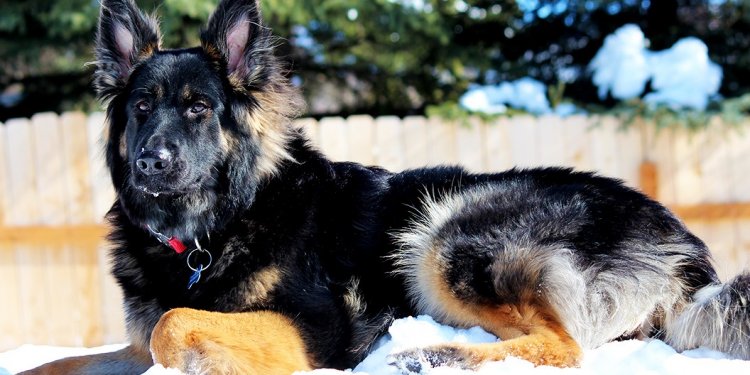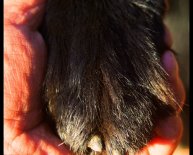
German Shepherd large breed
 Choosing the best large breed puppy food — and feeding it in the right amount — can significantly lower your dog’s risk of developing hip dysplasia.
Choosing the best large breed puppy food — and feeding it in the right amount — can significantly lower your dog’s risk of developing hip dysplasia.
That’s because the nutritional needs of large and giant breed puppies are different from those of small and medium breeds.
And ignoring those needs can lead to crippling bone and joint disorders like:
- Elbow dysplasia
- Osteochondrosis (OCD)
- Canine hip dysplasia (CHD)
- Developmental orthopedic disease (DOD)
However, before a dog owner can take steps to help prevent these conditions, it’s important to first understand the cause.
Why Large Breeds Are
at Greater Risk
Large breed puppies are those whose adult weight will ultimately exceed 50 pounds.
When compared to smaller breeds, two important factors about the way they grow make large breed puppies more prone to skeletal problems:
- They grow faster
- They remain puppies longer
A Labrador retriever can grow from just under a pound at birth to over 70 pounds in a year. That’s a whopping 70-fold increase in size in just 12 months.
In comparison, a human being can take 18 years to achieve results that are less than half that much.
What’s more, unlike smaller breeds that can be fed as adults at about 9-12 months, many larger breeds continue to grow and can still be considered puppies until 12 to 24 months.
Rapid growth means the bones must change quickly — a factor that can put them at risk of forming improperly.
And it is this remarkable rate of growth that makes large and giant breeds so sensitive to nutritional imbalances.
The Protein Myth
Unfortunately, the Internet is awash with misinformation about how to feed large breed puppies.
For example, many insist that high levels of dietary protein can lead to hip dysplasia.
Yet contrary to that popular myth…
No evidence exists to link high protein intake to skeletal disease in large breed dogs.
So, if high protein isn’t the problem — what is?
The Real Causes
of Hip Dysplasia in Dogs
If you exclude all the less common factors, orthopedic disease in large breeds appears to be the result of at least one of 3 proven causes:
- Genetics
- Overfeeding
- Excessive dietary calcium
So, since after birth there’s nothing you can do to change your puppy’s genetics…
It’s important to avoid overnutrition — feeding too many calories or too much calcium — to help lower your dog’s risk of hip dysplasia.
The Danger
of Overfeeding
Free choice is a popular feeding method in which the food remains in the bowl and continuously available — so a puppy can eat whenever it wants.
And many owners of large breed puppies mistakenly believe that this form of uncontrolled eating is the correct way to feed their pets.
However, free choice feeding has been shown to cause a puppy to grow too fast — and lead to serious problems.
For example, a 1995 German study of Great Danes demonstrated a significant increase in the risk of developing skeletal disease when the puppies were fed free choice.
In another study, one group of Labrador Retriever puppies was fed throughout life a restricted calorie diet while a second was fed free choice.
The restricted calorie group experienced a much lower incidence and later onset of hip joint arthritis.
Too Much Calcium
Like overfeeding, excessive dietary calcium has also been shown to increase the risk of skeletal disease in large breed puppies.
That’s because puppies can have trouble regulating how much calcium is absorbed from their intestinal tracts.
And that’s not all.
Feeding too little calcium can also lead to problems.
That’s why it’s so important to feed a dog food that contains an amount of calcium that’s safe for large breed puppies.
Recommended
Calcium Guidelines
Fortunately, there’s general agreement among the experts. To meet AAFCO nutrient profiles for growth in large breed puppies, a dog food must (on a dry matter basis) contain:
- 1.2 to 1.8% calcium
- 1.0 to 1.6% phosphorus
- Calcium-to-phosphorus ratio 1:1 to 1.8:1










